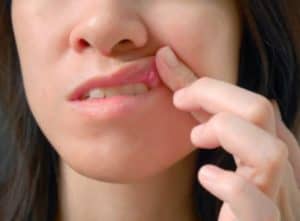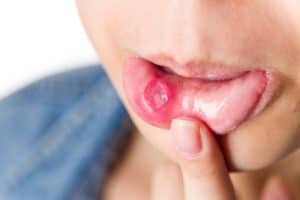Greetings! In today’s article we shall be talking a little bit about canker sores. They can be really painful spots inside our mouths which can pose a problem to our daily lives. I am sure you must have had them at some point in your lives, some more often than others.
But what are they? How can we know they are exactly that and not something else? Why do they form? We shall find the answers to these questions and more with the help of Los Algodones dentists.
What exactly are canker sores?
Canker sores are small, shallow ulcers that form in the soft parts of our mouths. Ulcers themselves are open sores that appear when there is damage, in this case on a mucous membrane.
Due to how painful they get to be, it makes uncomfortable for people to talk and even eat. They can also be addressed as aphthous ulcers.
Also, it is worth mentioning that although canker sores can form on the tongue, soft palate, gums and even the inner part of our cheeks, it does not on the outside of our lips.
Is it really a canker sore?
Canker sores are mostly round, with a white or yellow center and boast a red border around them. They are also painful, that is for sure.
Besides the obvious, there are three types we can break them down to:
Minor. Around 3 to 10 millimeters in diameter. These canker sores are the most common and take between 1 to 2 weeks to heal. They do not leave scars.
Major. These are past the 10 millimeter radius. They can have an irregular shape as opposed to a round one. They take longer to heal and can leave a scar.
Herpetiform sores. These are clusters of really small canker sores, around 2 to 3 millimeters each. They are formed really close to each other, but they are treated the same as minor canker sores. So you can expect them to heal as fast and without scars.
Canker sores, cold sores or fever blisters?
Although the similarity in their names, they are not equal at all.
Los Algodones dentists make emphasis that canker sores can appear out of nowhere and are not contagious.
Whereas cold sores, also known as fever blisters, stem from the herpes simplex virus and can spread to other people.
What causes canker sores?
There are many ways to get a canker sore. More commonly from bruises as that from hard brushing and biting you cheeks.
Here are the most common examples:
- Small bruises and injuries.
- Constant irritation due acidic and citrusy foods.
- Fatigue, stress and anxiety.
- Poor diets without the needed vitamins and minerals.
- Use of tobacco products and smoking.
- Genetics, as well as allergies.
How do we treat them?
Usually, canker sores do not need a physician or dentist to diagnose. Nor either one to treat, as they usually come and go!
We suggest you to take care of them by:
- Rinsing your mouth with salt and water. Alternatively with a mouth rinse without sodium lauryl sulfate.
- Having a good diet. Also do not forget to eat and drink water, even if it hurts!
- Have a good oral hygiene. This includes not bein sg too rough on your gums and teeth with your toothbrush.
- If a canker sore remains for more than two weeks, you should consult a dentist!
Although not exactly tips to cure canker sores, you might want to be careful of:
- Spicy and acidic foods and beverages. This will just irritate the area even further.
- Foods that are sharp and hard that can easily poke and stab at those sores.
- Not drinking water. The mouth needs to be moist or else it can get VERY uncomfortable really fast.
